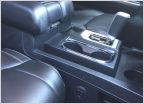-
Welcome to Tundras.com!
You are currently viewing as a guest! To get full-access, you need to register for a FREE account.
As a registered member, you’ll be able to:- Participate in all Tundra discussion topics
- Transfer over your build thread from a different forum to this one
- Communicate privately with other Tundra owners from around the world
- Post your own photos in our Members Gallery
- Access all special features of the site
Adding a DC-DC charger for my trailer
Discussion in '2.5 Gen Tundras (2014-2021)' started by acl3, Jun 4, 2025 at 2:02 PM.


 Transfer Case Actuator Problems - Poll
Transfer Case Actuator Problems - Poll Tailgate not locking or unlocking with remote
Tailgate not locking or unlocking with remote Negative battery terminal upgrade, or just better regular check?
Negative battery terminal upgrade, or just better regular check? Need a FOB....help!
Need a FOB....help! Running board brackets
Running board brackets Power Outlet Installation
Power Outlet Installation














































































